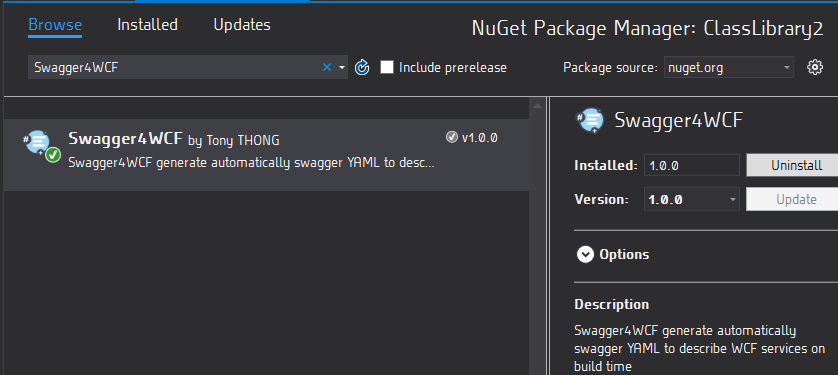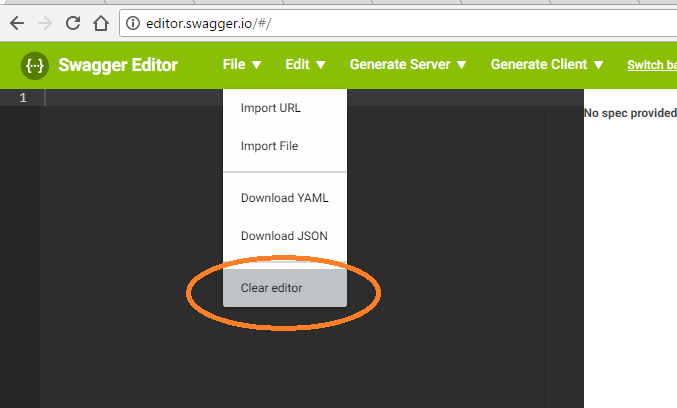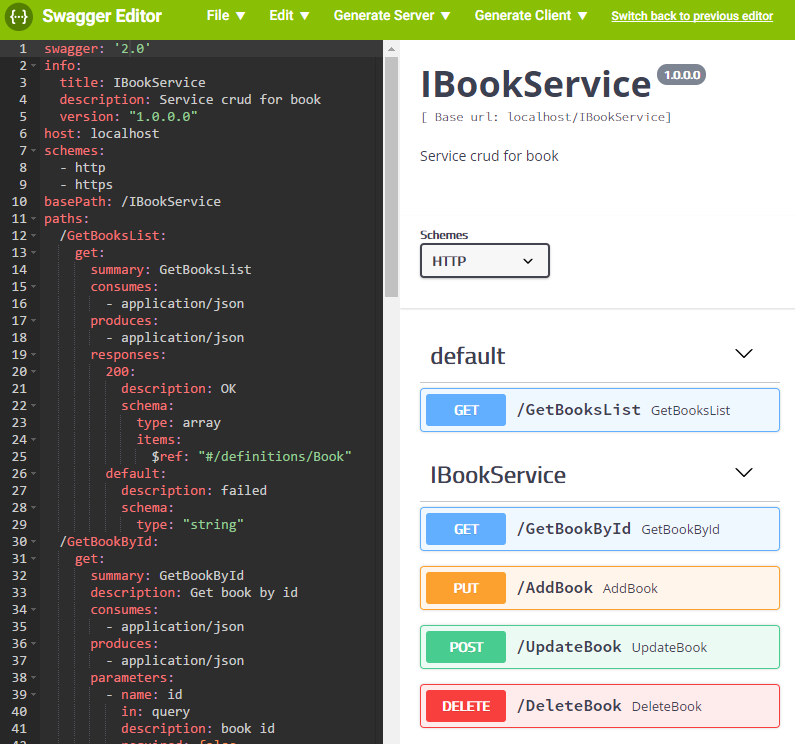How to Generate Basic Swagger yaml Description for WCF Automatically on Build Time with Swagger4WCF .NET 4.0+
5.00/5 (6 votes)
How to generate basic swagger yaml description for WCF automatically on build time with Swagger4WCF .NET 4.0+
Introduction
It can be very boring to manually write yaml description for swagger and maintain it especially when your WCF services are very simple. There is a nuget package called Swagger4WCF that automatically generates yaml description for swagger 2.0 for each interface matching attributes used by WCF (ServiceContract/OperationContract/WebGet/WebInvoke).
How to Use Swagger4WCF
There are only a few step required to test it:
- Create a library with WCF interface:
/// <summary> /// Represent a book /// </summary> [DataContract] public class Book { /// <summary> /// Book id /// </summary> [DataMember] public int Id { get; set; } /// <summary> /// Book name /// </summary> [DataMember] public string Name { get; set; } }/// <summary> /// Service crud for book /// </summary> [ServiceContract] public interface IBookService { /// <summary> /// Get list of book /// </summary> /// <returns>list of book</returns> [OperationContract] [WebGet(RequestFormat = WebMessageFormat.Json, ResponseFormat = WebMessageFormat.Json)] Book[] GetBooksList(); /// <summary> /// Get book by id /// </summary> /// <param name="id">book id</param> /// <returns>book</returns> [OperationContract] [WebGet(RequestFormat = WebMessageFormat.Json, ResponseFormat = WebMessageFormat.Json)] Book GetBookById(string id); /// <summary> /// Add book /// </summary> /// <param name="name">name of book</param> /// <returns>id of book</returns> [OperationContract] [WebInvoke(Method = "PUT", RequestFormat = WebMessageFormat.Json, ResponseFormat = WebMessageFormat.Json)] void AddBook(string name); /// <summary> /// Update book /// </summary> /// <param name="id">if of book</param> /// <param name="name">name of book</param> /// <returns>id of book</returns> [OperationContract] [WebInvoke(Method = "POST", RequestFormat = WebMessageFormat.Json, ResponseFormat = WebMessageFormat.Json)] void UpdateBook(string id, string name); /// <summary> /// Delete book /// </summary> /// <param name="id">id of book</param> /// <returns>id of book</returns> [OperationContract] [WebInvoke(Method = "DELETE", RequestFormat = WebMessageFormat.Json, ResponseFormat = WebMessageFormat.Json)] void DeleteBook(string id); } - Configure your project to generate documentation:
In properties of project > build tab > XML documentation file (do not specify path of documentation, it will provide default path that
Swagger4WCFlooks for).
- Install nuget package on project where WCF interfaces are declared:
https://www.nuget.org/packages/Swagger4WCF

- Build your project will trigger
Swagger4WCF:
You can see yaml in output directory!
Test the Generated yaml in Swagger Editor Online
Copy content of the generated yaml and Rendez vous to swagger online editor:
Clean swagger editor to get started:

Then paste the content of your generated yaml:


How It Works in the Background
Swagger4WCF uses NuPack postbuild pattern to trigger at build time.
https://www.codeproject.com/Tips/1190360/How-to-setup-a-managed-postbuild-without-scripting
At build time, it will detect assemblies present in output directory, open them with mono.cecil (to reflect assemblies) to generate expected yaml description for swagger 2.0.
Swagger4WCF detects WebGet/WebInvoke to provide Verb/Method in serialization style in yaml.
Conclusion
Swagger4WCF may help you to save time when developing web application. It is easy to test, use or remove. It can be a nice starter for a newbie in swagger technology because it is only required to install a nuget package. Unfortunately, it is not mature enough for advanced WCF configuration, but I'm sure it can be improved.

